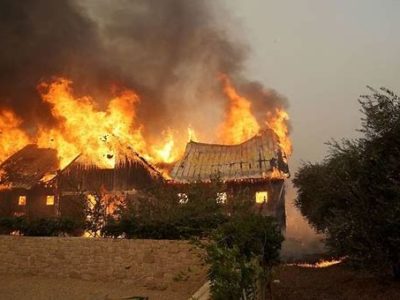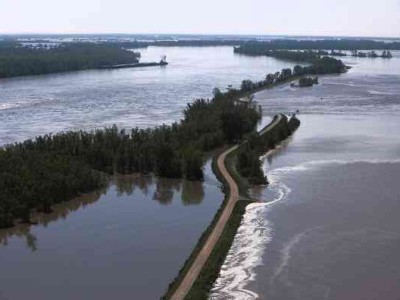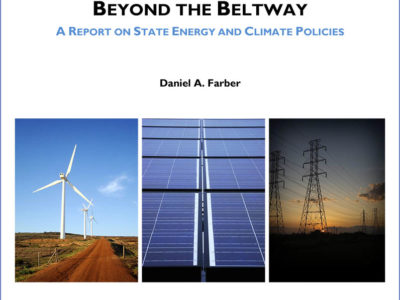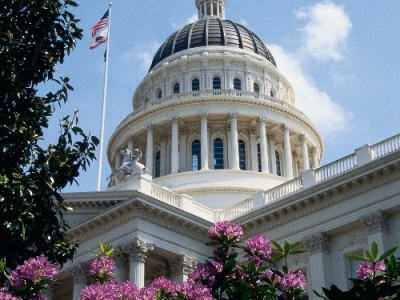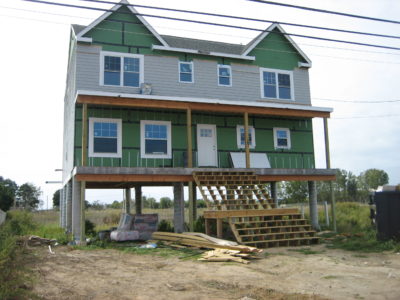Climate Adaptation
Spreading Like Wildfire
They don’t get as much attention as floods or earthquakes, but wildfires are deadly serious.
This is the first of a three-part series about wildfires. Massive wildfires are a growing problem, posing risks to people and the environment. Considering that my house is located only a few miles from the 1991 Oakland Hills fire, which killed 25 people, destroyed 2800 homes, and caused $1.8 billion in damage, this is an …
Continue reading “Spreading Like Wildfire”
CONTINUE READINGScenarios
We live in an uncertain world. Scenario planning can help.
When Shell Oil produced a sophisticated scenario of the path to a carbon neutral world in 2070, a lot people took notice. Shell concluded that the “relevant transformations in the energy and natural systems require concurrent climate policy action and the deployment of disruptive new technologies at mass scale within government policy environments that strongly …
CONTINUE READINGFlood Safety, Infrastructure, and the Feds
Standards for levees, seawalls, and other infrastructure urgently need attention.
The federal government is responsible for responding to major floods and runs the federal flood insurance program. It also has millions of dollars of its own infrastructure at risk from floods. Yet the government is failing to deal effectively with flood risks before the fact. Let’s begin with the levees that are the main defense …
Continue reading “Flood Safety, Infrastructure, and the Feds”
CONTINUE READINGMaladaptation
It’s not just that we’re slow in achieving resilience. It’s that often we’re moving in the opposite direction.
Some economic models of climate change come out with low damages because they assume smooth and effective adaptation efforts. That never made much sense. There’s a lot of inertia in social systems, and planning major projects can take a long time. Some of what we’re seeing lately is worse than that, however. We’re seeing cases …
Continue reading “Maladaptation”
CONTINUE READINGLet a Hundred (Municipal) Flowers Bloom
Despite Trump, cities across the country are taking climate change seriously.
In the era of Trump, one bright spot remains what’s happening in cities across the nation. Here are some numbers: 402 U.S. mayors have endorsed the Paris Agreement and announced their intention of meeting its goals, while 118 have endorsed the goal of making their cities 100% renewable. A bit of quick research provides a …
Continue reading “Let a Hundred (Municipal) Flowers Bloom”
CONTINUE READINGFifty States, Fifty Energy Policies
New report provides a snapshot of renewable energy growth across the country.
The federal government gets all the headlines, but state governments control much of energy policy. They control local utilities and set policies on renewable energy. But because so many jurisdictions are involved, it’s hard to get an overall picture of what’s really happening. I’ve been trying to get at least a rough sense of what’s …
Continue reading “Fifty States, Fifty Energy Policies”
CONTINUE READINGGuest Blogger Ken Alex: Resilience and Adaptation
Post #7 in a Series on California Climate Policy by Ken Alex, Senior Policy Advisor to Gov. Jerry Brown
[This is the seventh post in a series expressing my view of why California’s actions on climate change are so important and how they will change the world. The introductory post provides an overview and some general context.] Climate change has arrived. Our fire season never ends; we no longer know if we will have a rainy …
Continue reading “Guest Blogger Ken Alex: Resilience and Adaptation”
CONTINUE READINGThe Story Behind a Political Breakthrough
Congress passed a 2017 law recognizing climate change as a serious threat. How did THAT happen?
Last month, Congress passed and Trump signed a provision in the Defense Authorization Act that designates climate change a serious threat to national security. That was a historic first. I blogged about the bill last month, but it seemed worthwhile to investigate this surprising development further. Although there’s no direct evidence, there are strong indications …
Continue reading “The Story Behind a Political Breakthrough”
CONTINUE READINGDisaster Resilience: Inching Forward, Sliding Back
We’re slowing improving disaster resilience. But there have been some notable setbacks.
An ounce of prevention is worth a pound of cure, as the saying goes. The same is true for disasters. We are slowly getting better at mitigating disaster risks. These improvements don’t generally take the form of dramatic breakthroughs. Rather they involve incremental progress on a number of fronts. For instance, homes that were constructed …
Continue reading “Disaster Resilience: Inching Forward, Sliding Back”
CONTINUE READINGCenter for Ocean Solutions Releases Consensus Statement and Report on the Public Trust Doctrine, Sea Level Rise, and Coastal Land Use in California
Report Analyzes State Public Trust Responsibilities on the Coastline, Coincides With Coastal Commission Staff’s Release of Draft Residential Adaptation Policy Guidance
UPDATE (September 1, 2017): The statement’s drafters have provided a link (shared at the end of the post) for California attorneys who wish to sign on to the statement discussed here. Last month, a group of public trust and coastal land use experts, working under the auspices of the Center for Ocean Solutions, released two …
CONTINUE READING



